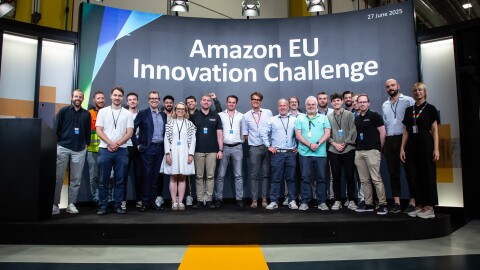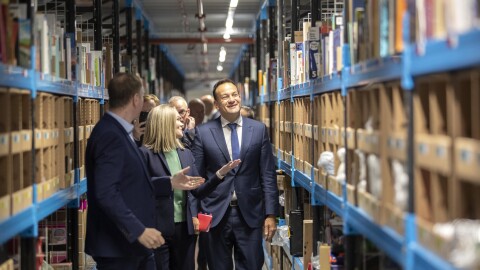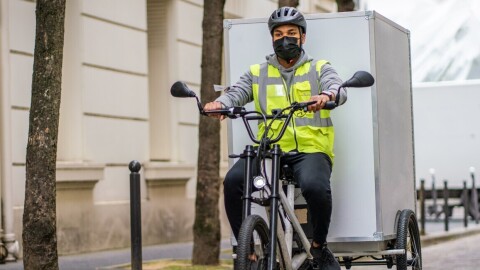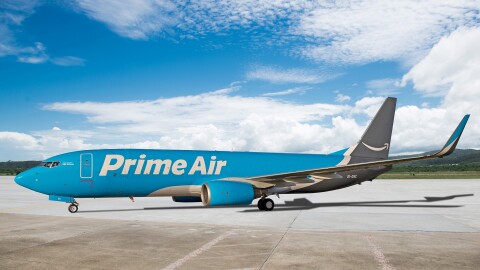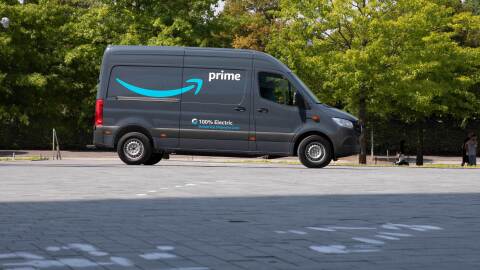Amazon has begun hosting large-scale rooftop solar systems on fulfillment centers across the country. Our goal is to have more than 50 fulfillment centers globally with rooftop solar installed by 2020; 15 sites are planned to be complete by the end of 2017. The solar systems in the initial deployment could generate as much as 41 MW of power.
Our commitment to on-site solar is about more than clean, renewable energy – it also reflects the strength of partnerships we develop with local utilities, clean energy service providers, community leaders and building owners. This first deployment of rooftop solar systems is part of a long-term initiative that will start in North America and spread across the globe.
For more information about the fulfillment center rooftop solar initiative in the US, see the video and blog post here.

Amazon designs and operates buildings that prioritise energy efficiency, low maintenance costs and modular design. Our new buildings are equipped with energy efficient technologies such as low-emitting diode (LED) lighting, advanced building management systems, motor variable frequency drives, high efficiency heating and cooling systems, and remote energy and power monitoring.
In addition to incorporating energy efficiency into new building design, we are retrofitting our existing buildings. For example, LEDs have helped reduce Amazon’s energy consumption by approximately 50,000 MWh per year to-date. Our energy efficiency assessments to identify energy efficiency opportunities have uncovered additional low- and no-cost energy savings.
Amazon signed the Sustainable Fuel Buyers’ Principles, demonstrating our commitment to working with service providers to accelerate the transition to low-carbon commercial transportation solutions. For example, across Europe, Amazon is contracting with our service providers to launch our first low-pollution fleet, comprised of 130 low-pollution, electric and natural gas vans and cars. We also have over 40 electric scooters and e-cargo bikes that complete local urban deliveries.
We manage our own fleet of trailer equipment. In North America, this includes a mix of 53’ trailers and 28’ pups, which are equipped with aerodynamic skirts and PSI automatic tire inflation systems to maximize fuel efficiency in our North American fleet. In the United Kingdom, we are testing and investing in double-deck trailers, which increase the load capacity per trailer, reducing the total number of trailers on the road.
We have over half a million employees and a presence across the globe. As part of our global footprint, we have focused on sustainable design in our offices and fulfillment centers worldwide.
In Seattle, our Doppler building and adjacent Meeting Center in downtown Seattle feature green roofs that capture and filter rainwater and our newest buildings are heated using an innovative approach to sustainability— recycling energy. This "district energy" system works by capturing heat generated at a non-Amazon data center. In addition, four of Amazon's fulfillment centers in Indiana, Pennsylvania and Arizona received LEED certification for their commercial interiors. These facilities were constructed with recycled building materials and feature natural lighting and resource-efficient plumbing fixtures and lighting controls.
Many of Amazon's fulfillment centers around the world also have sustainable and eco-friendly interiors and exteriors. For example, Amazon.de's corporate offices in Munich, Germany, have been gold-certified as environmentally friendly by the German Sustainable Building Council, based on their energy-efficient interiors and use of sustainable building materials. Amazon's fulfillment center in Beijing, China, maximises the use of natural lighting, saving thousands of kilowatt-hours of power usage each month. We're also experimenting with solar and fuel cell installations in our fulfillment centers and will continue to explore new technologies to help further reduce our environmental impact.



